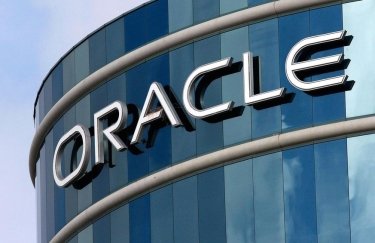
Oracle's value has fallen below the level it was at the time of signing the deal with OpenAI / Pexels
Following the declaration of a substantial agreement with OpenAI worth $300 billion on September 10, Oracle's overall value on the stock exchange displayed notable escalation, but subsequently experienced considerable diminishment, despite the fact that the Nasdaq Composite, Microsoft, and Dow Jones US Software indexes largely remained stable during this timeframe.
This is covered by Delo.ua referring to the Financial Times.
The graphic presented by the newspaper reveals that during the agreement’s origination, the market capitalization surpassed $ 600 billion. Subsequently, a marked surge transpired, with the value of equities reaching above $ 900 billion, following which a downturn commenced and persists. Consequently, the market capitalization has plummeted by $315 billion from its apex, but by $60 billion from the capitalization volume at the time of the agreement – .

Oracle market capitalization. Source: Bloomberg
In actuality, the enterprise forfeited a sum comparable to the worth of General Motors or dual Kraft Heinz.
Why are investors uneasy
The anxieties of the marketplace are associated with Oracle’s inclination towards utilizing borrowed funds for constructing data centers tailored to OpenAI’s requirements. As the data illustrates, the entity has essentially transformed into a surrogate exchange for OpenAI in the U.S., thereby fostering an elevated susceptibility to customer concentration.
AGI pursuit — alongside total capital expenditure
The premise suggests: OpenAI is fervently striving to attain AGI ( artificial general intelligence ) , and Oracle stands as the solitary hyperscaler (a designation employed to characterize the foremost cloud computing firms globally, possessing exceptionally robust and extensive infrastructure ) capable of augmenting computing capability at the velocity mandated by OpenAI. Oracle assures minimal preliminary costs and the swiftest route to profit generation – partially owing to its role as a data center occupant rather than proprietor.
Nonetheless, this may embody a vulnerability rather than an asset: Oracle lacks the operational profit buffer akin to Microsoft or Amazon, and is compelled to wager predominantly on a singular clientele.
Ambitious investment policy
Of late, in Las Vegas, Oracle communicated its aspiration to achieve $166 billion in cloud-derived income by 2030.
The blueprint unfolds thus:
- $35 billion in capital expenditure for the fiscal year concluding in May;
- up to $80 billion yearly commencing from 2029;
- from 2027 onward, the majority of revenue will originate from OpenAI.

Consensus estimates for Oracle data center capital expenditures and revenues. Source: Bloomberg
However, a predicament arises: Oracle’s aggregate debt already overshadows EBITDA ( profits preceding interest, taxes, depreciation, and amortization) by a factor of 2.5 – twice the quantum observed in 2021, and potentially doubling by 2030. The anticipated projection portrays a negative cash influx for five consecutive years.
Hazards for lenders and shareholders
While the equities market has hitherto “digested” the deficits, the perils of the debt encumbrance linger. The expenditure associated with hedging ( safeguarding against economic uncertainties ) Oracle’s liabilities presently resides at a triennial zenith.
In prior months, any pronouncement concerning a collaboration with OpenAI would elevate the share price. Currently, it's the inverse: Broadcom and Amazon exhibited instability subsequent to declarations of agreements with OpenAI, Nvidia manifested negligible alteration, and Oracle is the most pronounced outlier.
Last week, Delo.ua indicated that Oracle has been impacted more adversely by the recent divestment of tech equities on Wall Street in comparison to its AI counterparts. Its equities have depreciated by almost 30% in the preceding month, nearly doubling Meta’s decrement.





